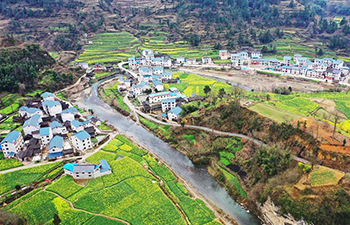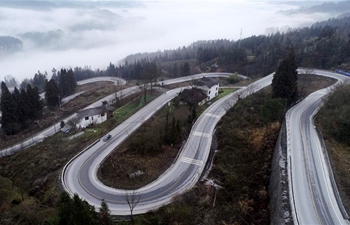File photo shows research team members working during the second expedition at the Lunpola Basin in southwest China's Tibet Autonomous Region. The discovery of fossilized palm leaves on the cold and high-altitude Qinghai-Tibet Plateau has led scientists to make new conclusions on when the plateau reached its current height. Su Tao, a leading scientist of the study from Xishuangbanna Tropical Botanical Garden, said the central part of the plateau did not reach its current altitude of about 4,500 meters until 23 million years ago. The conclusion challenges the prevailing view that the process happened about 35 million years ago, Su said. He said the judgment was based on the discovery of well-preserved palm fossils at the Lunpola Basin in central Tibet. By simulating a variety of topographic scenarios, the research team conjectured that about 25 million years ago, palm trees grew at a west-to-east valley flanked by high mountains in the central part of the plateau. (Xinhua/Su Tao)
Fossil leaves shed light on formation of Qinghai-Tibet Plateau
Source: Xinhua| 2019-03-07 20:50:08|Editor: Yang Yi
YOU MAY LIKE
-
Fossil dinosaur feathers reveal origin of flight
-
World's earliest fossil flower unearthed in E China's Nanjing
-
New dinosaur species identified from fossil jaw found in Australian mining rubble
-
China Focus: Qinghai-Tibet Plateau first conquered by humans at least 30,000 years ago
-
African lion cubs survive extreme environment of Qinghai-Tibet Plateau
MORE PHOTOS


















